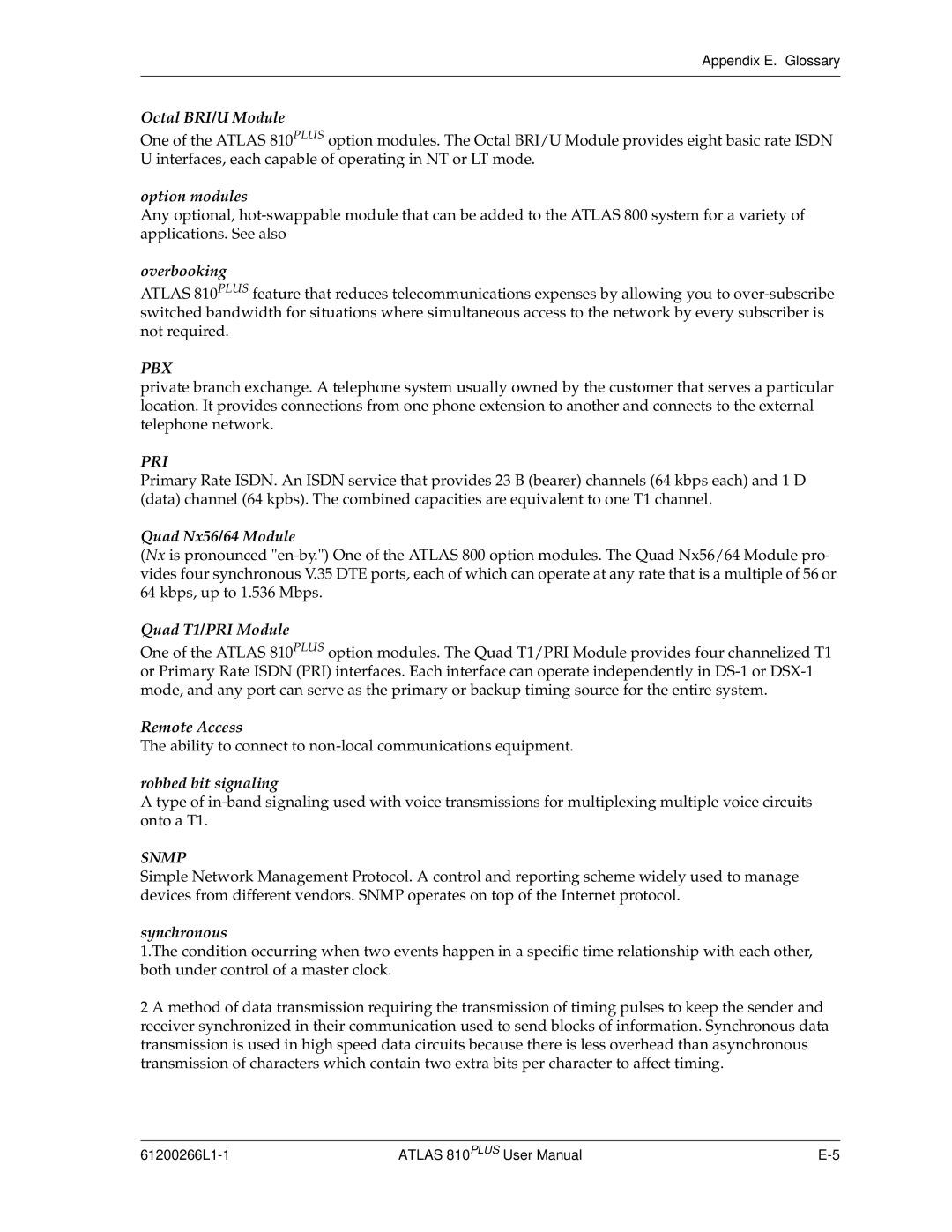
Appendix E. Glossary
Octal BRI/U Module
One of the ATLAS 810PLUS option modules. The Octal BRI/U Module provides eight basic rate ISDN U interfaces, each capable of operating in NT or LT mode.
option modules
Any optional,
overbooking
ATLAS 810PLUS feature that reduces telecommunications expenses by allowing you to
PBX
private branch exchange. A telephone system usually owned by the customer that serves a particular location. It provides connections from one phone extension to another and connects to the external telephone network.
PRI
Primary Rate ISDN. An ISDN service that provides 23 B (bearer) channels (64 kbps each) and 1 D (data) channel (64 kpbs). The combined capacities are equivalent to one T1 channel.
Quad Nx56/64 Module
(Nx is pronounced
Quad T1/PRI Module
One of the ATLAS 810PLUS option modules. The Quad T1/PRI Module provides four channelized T1 or Primary Rate ISDN (PRI) interfaces. Each interface can operate independently in
Remote Access
The ability to connect to
robbed bit signaling
A type of
SNMP
Simple Network Management Protocol. A control and reporting scheme widely used to manage devices from different vendors. SNMP operates on top of the Internet protocol.
synchronous
1.The condition occurring when two events happen in a specific time relationship with each other, both under control of a master clock.
2 A method of data transmission requiring the transmission of timing pulses to keep the sender and receiver synchronized in their communication used to send blocks of information. Synchronous data transmission is used in high speed data circuits because there is less overhead than asynchronous transmission of characters which contain two extra bits per character to affect timing.
ATLAS 810PLUS User Manual |
